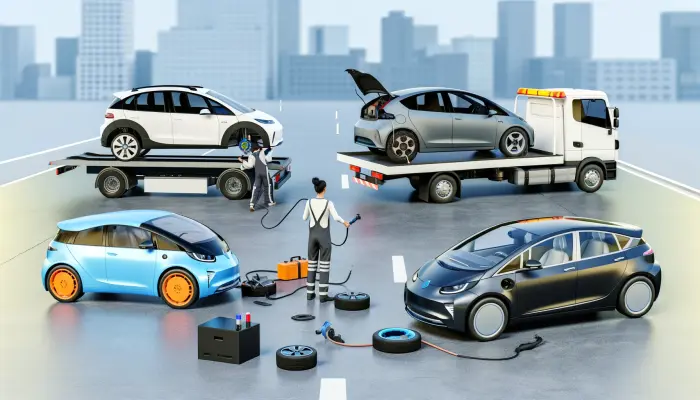Electric vehicles, like any other form of transportation, are at risk of being involved in traffic accidents. Their design is developed with such risks in mind and is capable of protecting passengers and the driver. Many experts believe that electric vehicles are safer than traditional vehicles due to the placement of the heavy battery at the bottom of the vehicle, which lowers the center of gravity and reduces the likelihood of rollover in a side collision.
However, electronic and electrical components are particularly vulnerable in the event of an accident. Damages can pose a safety threat to the crew. This is especially true for the main battery and wiring under high voltage. All high-voltage systems are equipped with protective mechanisms that prevent the risk of electric shock even when insulation is damaged.
Battery Discharge
A complete discharge of the battery is a normal occurrence, but it can cause problems if there is no nearby source of energy for recharging. To maximize the distance on the remaining charge, you should:
Turn off unnecessary energy-consuming devices, especially climate control systems. Activate the energy-saving mode. Maintain a smooth driving style, avoiding sudden accelerations and decelerations. Use regenerative braking to charge the battery.
Complete Battery Discharge
If the battery is completely discharged, the best solution is to call a tow truck. In the case of towing, it is important to note that not every electric vehicle allows it, and if towing is possible, it should be carried out in a special mode.
Problems with Starting the Electric Vehicle
If the electric vehicle does not start with a fully charged battery, the problem may lie in the discharge of the standard 12-volt battery that powers the onboard electronic systems. The solution may be to jump-start from another vehicle.
Electric Vehicle Stuck
If an electric vehicle gets stuck in mud or snow, standard methods should be used to increase the wheel's traction with the road. It's important to remember that movement in conditions where the bottom of the vehicle contacts the surface should be carried out with extra caution, as the battery is located there.
Flooding of the Electric Vehicle
Water exposure to the electric vehicle can cause oxidation and corrosion of components, although the system usually withstands short-term immersion.
Electric Vehicle Fire
In the event of a fire of the traction battery, it is necessary to immediately disconnect the vehicle. Extinguishing such a fire can be difficult without the help of the fire brigade.
Radiator Damage in an Electric Vehicle
Damage to the radiator is not critical, and if the distance to the repair site is short, it can be reached by driving cautiously and avoiding abrupt maneuvers.
